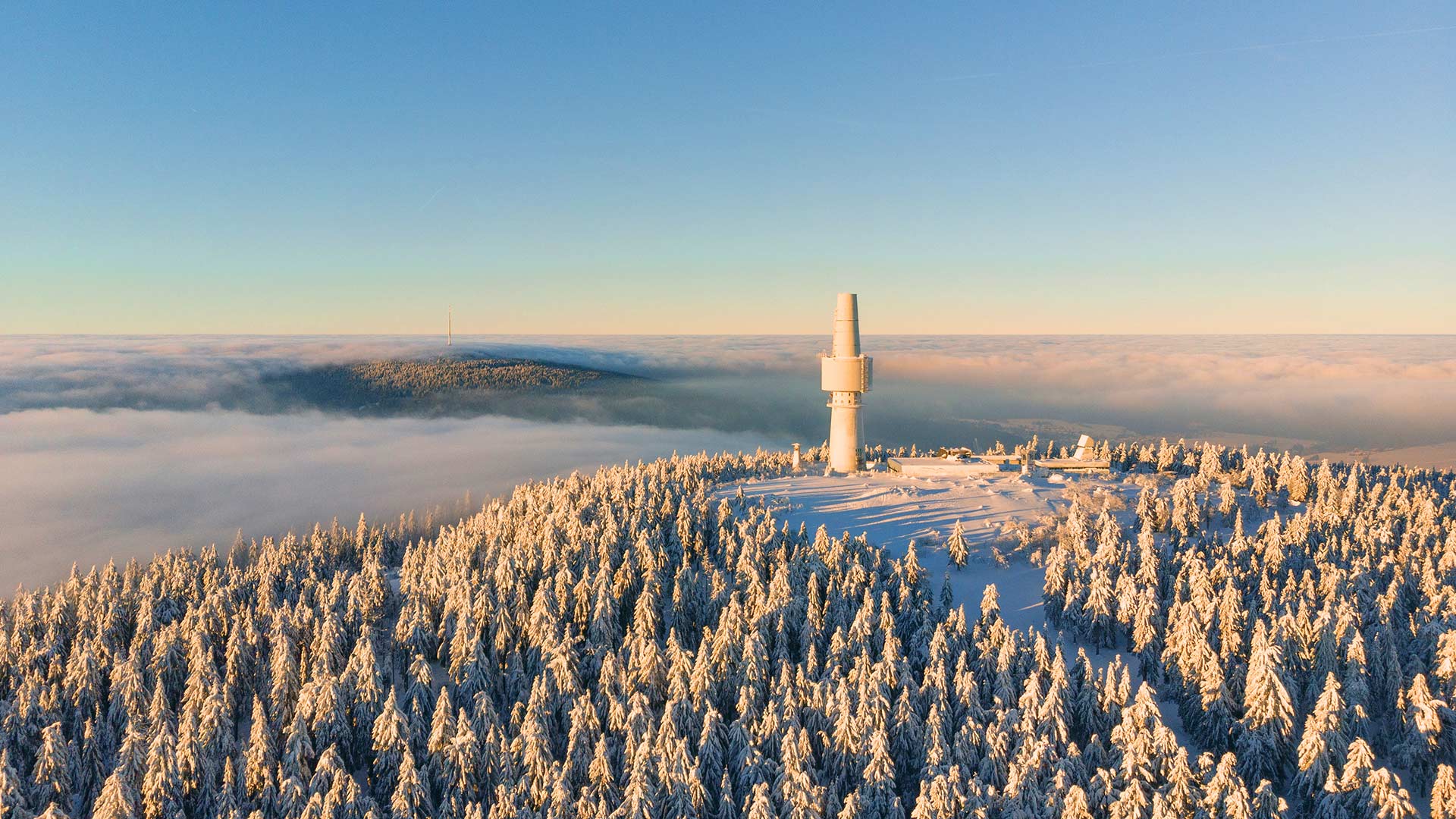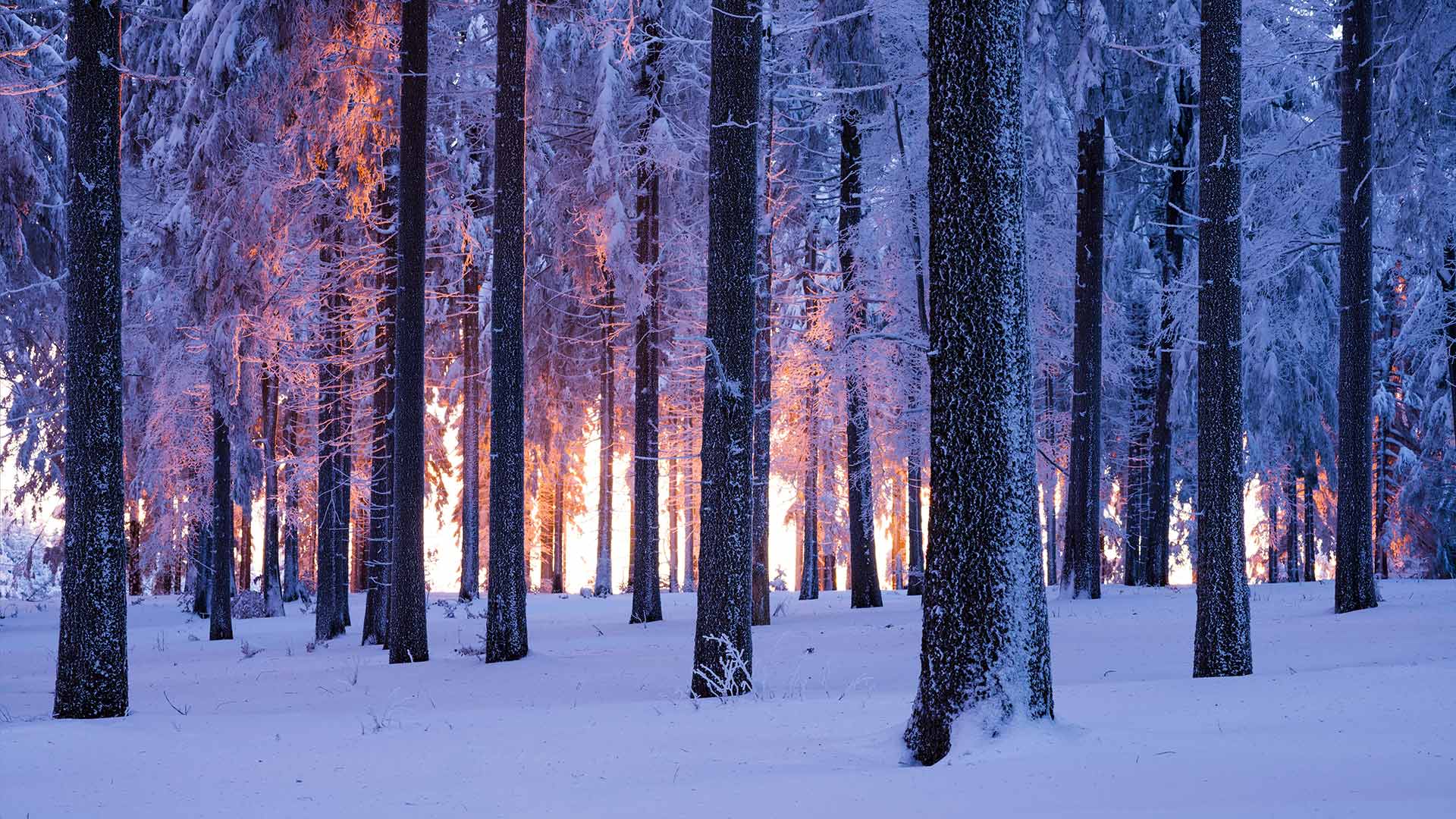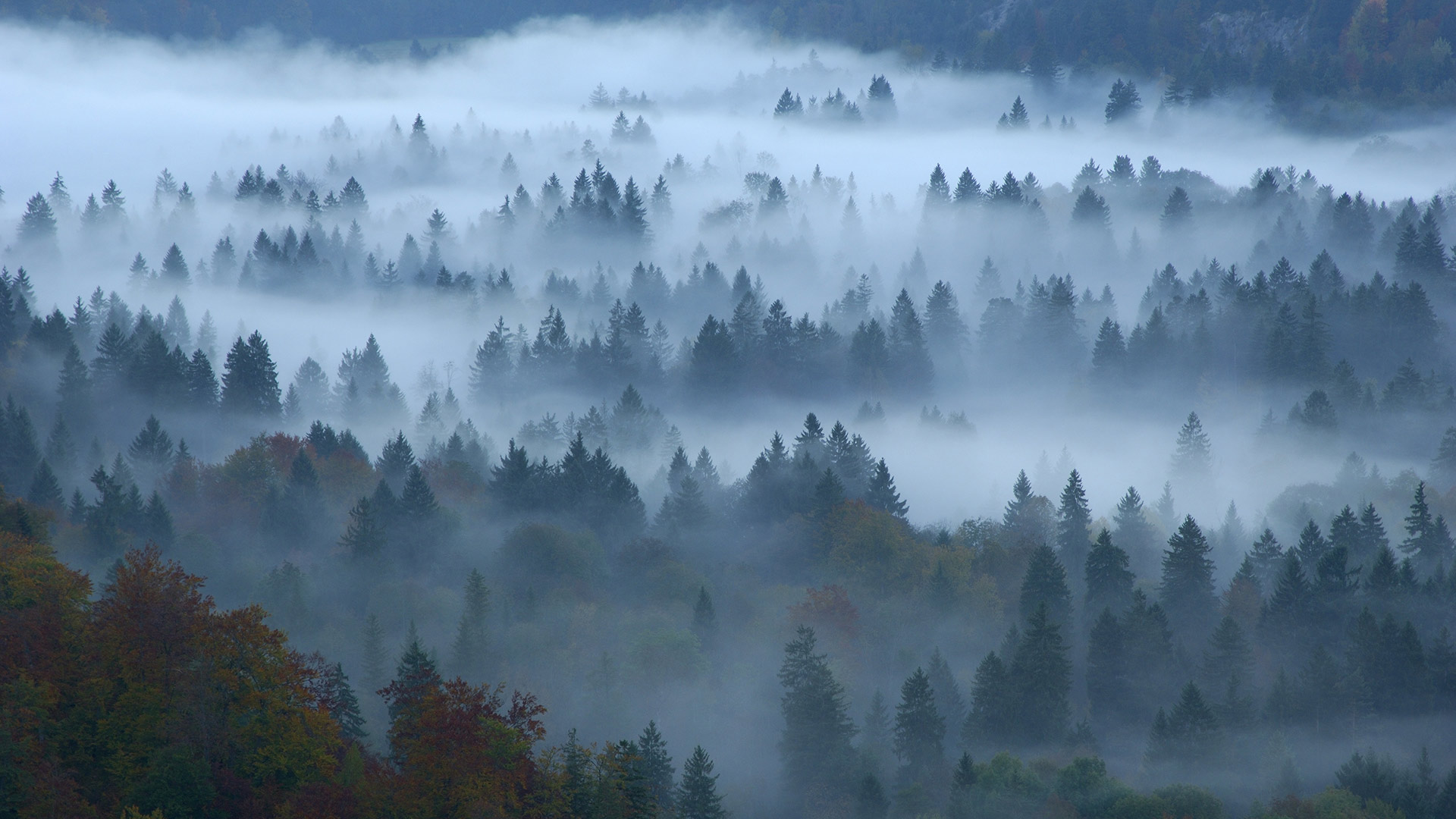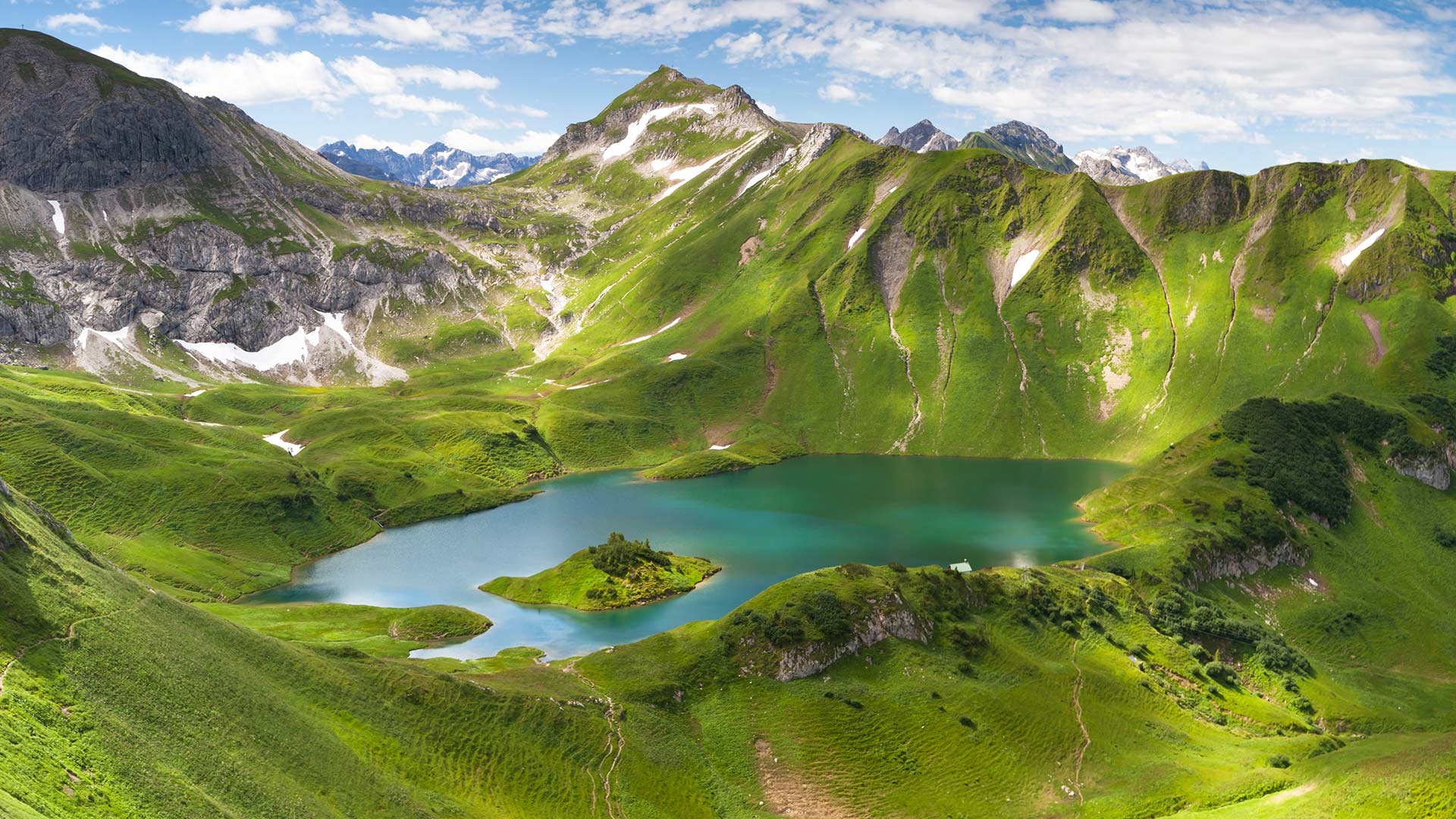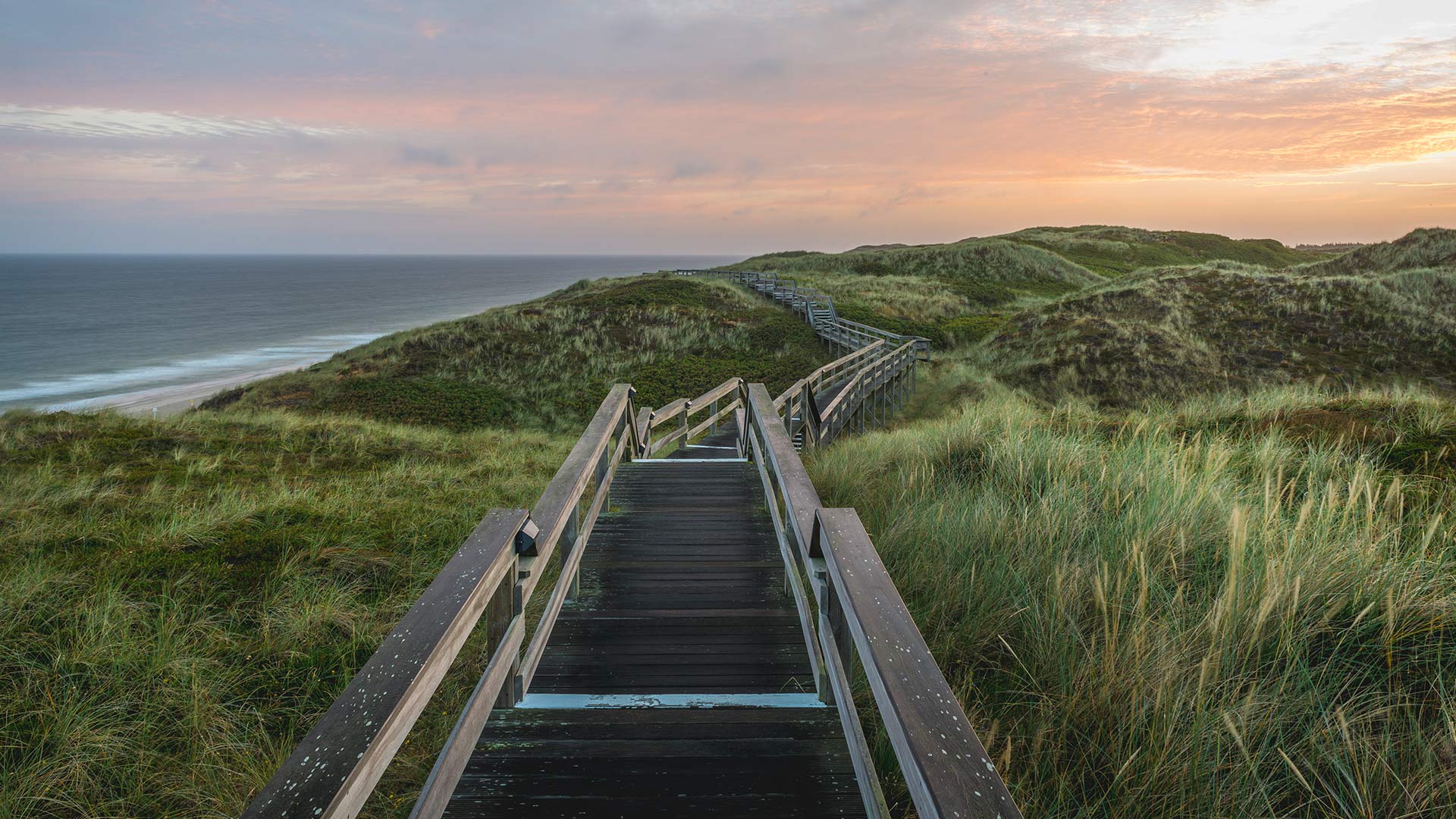鸟瞰施内贝格山脉-奥克森峰,德国 (© Felix Meyer/Adobe Stock)
巴伐利亚阿尔卑斯山脉中的米滕瓦尔德小屋,德国 Mittenwalder Hütte in the Bavarian Alps of Germany (© Sebastian Frölich/Offset by Shutterstock)
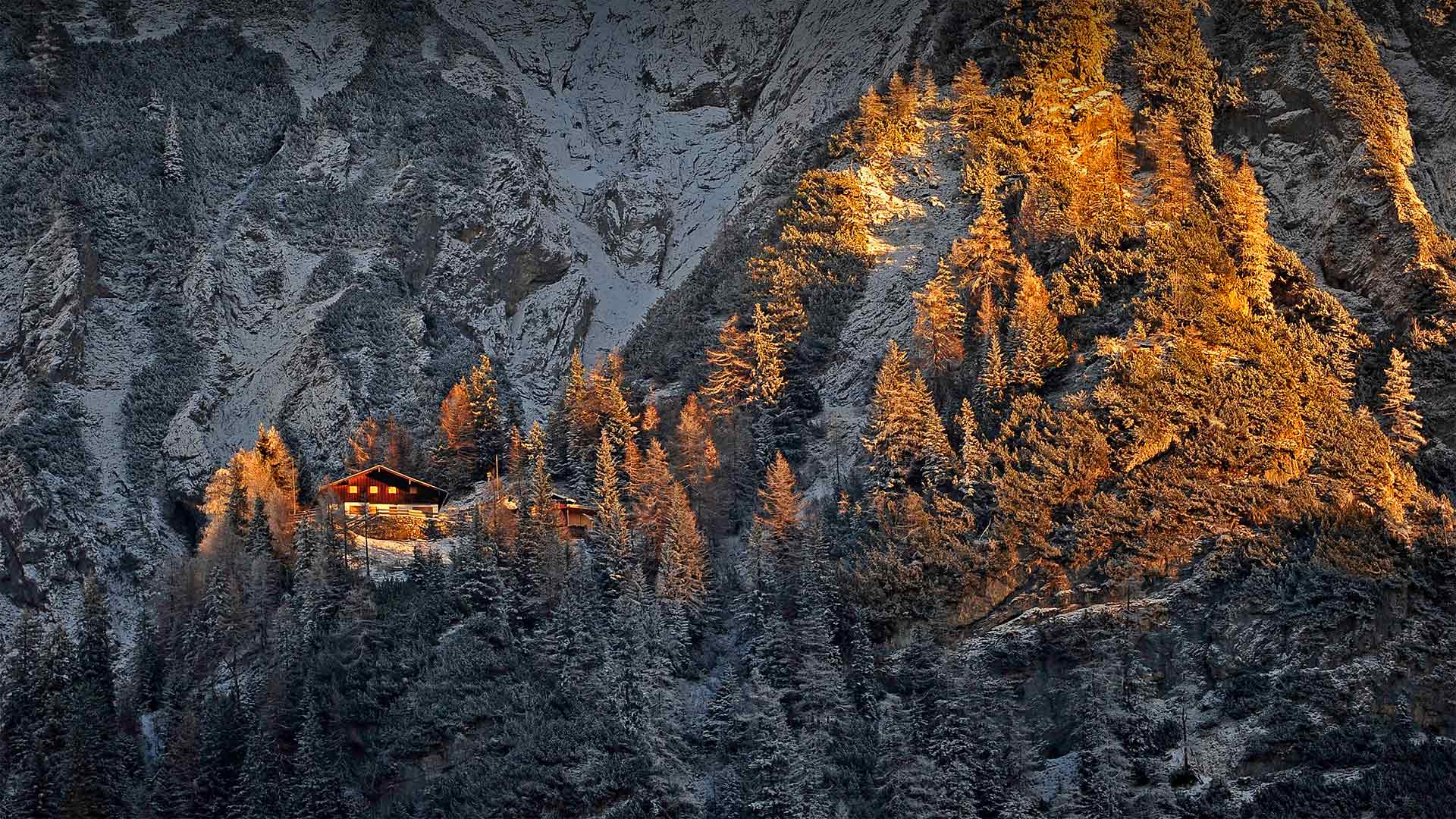
巴伐利亚阿尔卑斯山脉中的米滕瓦尔德小屋,德国 Mittenwalder Hütte in the Bavarian Alps of Germany (© Sebastian Frölich/Offset by Shutterstock)
A glittering diamond in the rough
Peering from this vantage point you may wonder, how in the world could anyone access this hut nestled in the Bavarian Alps? By hiking in, of course. There are well over 1,000 such huts dotting the Alpine landscape throughout Europe, most of them built and maintained by private social clubs devoted to climbing, hiking, and other activities in the mountains. These huts allow hikers to light out onto the extensive trail systems, sometimes for days, while carrying as little gear as possible. No need to pack cooking equipment, tents and sleeping bags when you have guaranteed shelter each night, with dinners, breakfasts, and, if you're lucky, a hot shower, included.
Do pack earplugs and a sleeping bag liner, as most of the beds are lined up next to each other in a dormitory setting. And don't try booking for this time of year. The hiking season in the Bavarian Alps typically begins in mid-May and lasts through the end of October. Weather, and COVID, permitting of course.
原石中闪闪发光的钻石
从这个有利的角度看,你可能会想,世界上怎么会有人能进入这个坐落在巴伐利亚阿尔卑斯山的小屋?当然是徒步旅行。在整个欧洲的阿尔卑斯山上,有1000多个这样的小屋,其中大多数都是由专门从事登山、徒步旅行和其他山区活动的私人社交俱乐部建造和维护的。这些小屋让远足者可以在尽可能少的携带装备的情况下,在广阔的步道系统中轻松行走,有时甚至可以持续数天。如果你保证每晚都有住处,就不需要打包烹饪设备、帐篷和睡袋,包括晚餐、早餐,如果你幸运的话,还可以洗个热水澡。
一定要带上耳塞和睡袋衬垫,因为在宿舍里,大多数床都是并排的。不要在一年中的这个时候预订。巴伐利亚阿尔卑斯山的徒步旅行季节通常从5月中旬开始,持续到10月底。当然,如果天气允许的话。
菲希特尔贝格山上的气象站和Fichtelberghaus酒店,德国上维森塔尔 Weather Station and Fichtelberghaus Hotel on Fichtelberg Mountain (1214m), Oberwiesenthal, Ore Mountains, Erzgebirge, Saxony, Germany (© Cornelia Dorr/eStock Pho
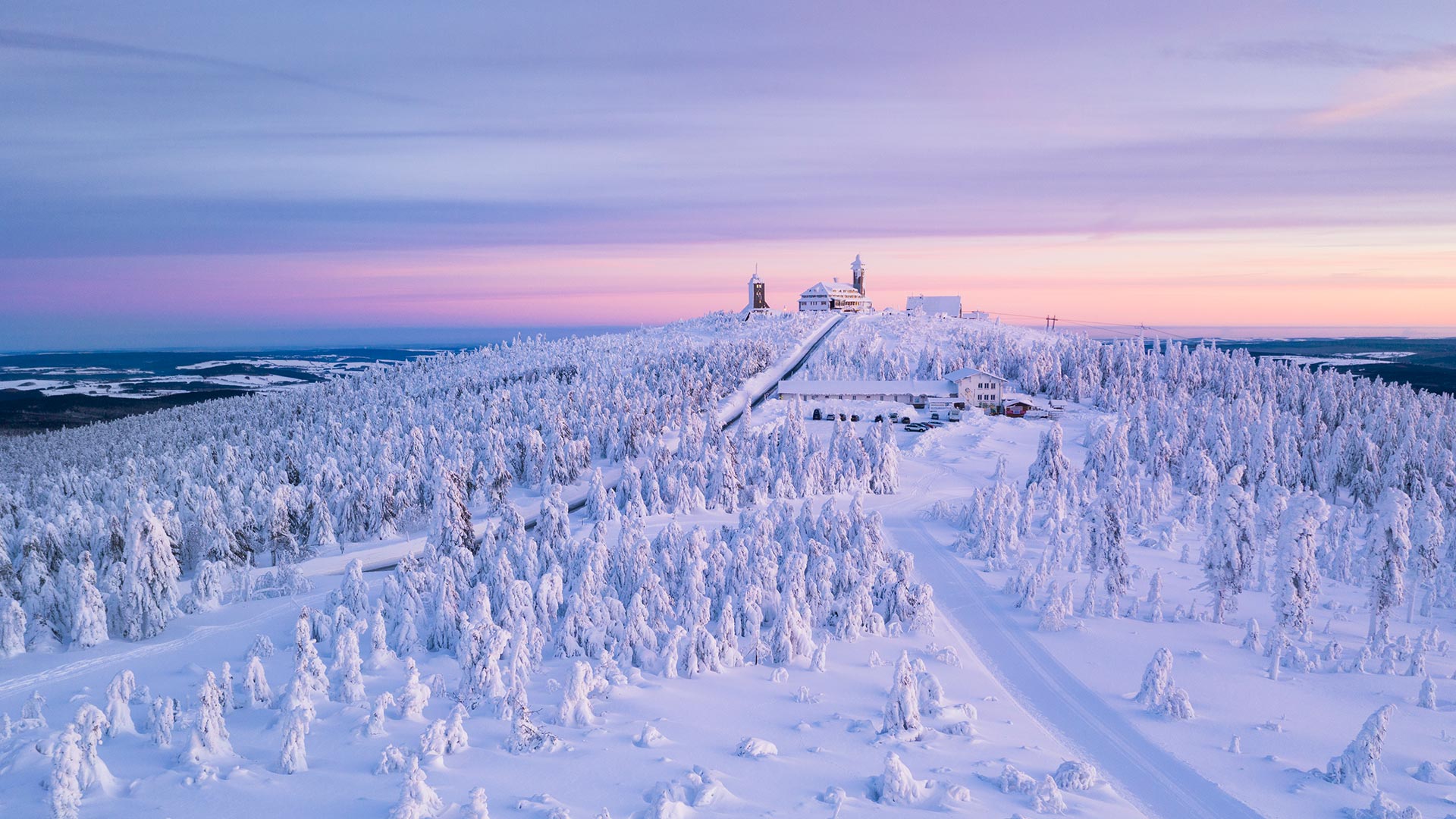
菲希特尔贝格山上的气象站和Fichtelberghaus酒店,德国上维森塔尔 Weather Station and Fichtelberghaus Hotel on Fichtelberg Mountain (1214m), Oberwiesenthal, Ore Mountains, Erzgebirge, Saxony, Germany (© Cornelia Dorr/eStock Photo)
Weather lights in the Ore Mountains
Lew Tolstoy would have had his true joy at this sight, and the picturesque winter landscape would surely have inspired him in the work of his epochal works. But neither Anna Karenina nor Father Frost found the way up to the Fichtelberg. Because today we do not show you a recording from Russia, but we take you on a trip to the Ore Mountains in Saxony.
The Ore Mountains are a mountain range in Saxony and Bohemia. The Fichtelberg near Oberwiesenthal is the highest mountain in Saxony, at around 1,214 metres. The spa town of Oberwiesenthal in the Pöhlbach valley is the highest town in Germany.
矿石山的天气灯
卢·托尔斯泰看到这一幕他会感到真正的喜悦,而如画的冬季风景肯定会激发他创作划时代作品的灵感。但是安娜卡列尼娜和弗罗斯特神父都没有找到通往费希特尔伯格的路。因为今天我们不给你们看来自俄罗斯的录音,而是带你们去萨克森的矿石山旅行。
矿石山是萨克森州和波希米亚山脉。奥伯维森塔尔附近的菲希特尔贝格山是萨克森州最高的山峰,约1,214米。位于波尔巴赫山谷的温泉小镇奥伯维森塔尔是德国最高的城镇。
霍恩施万高城堡, 巴伐利亚, 德国 Hohenschwangau Castle, Bavaria, Germany (© Mespilia/Shutterstock)
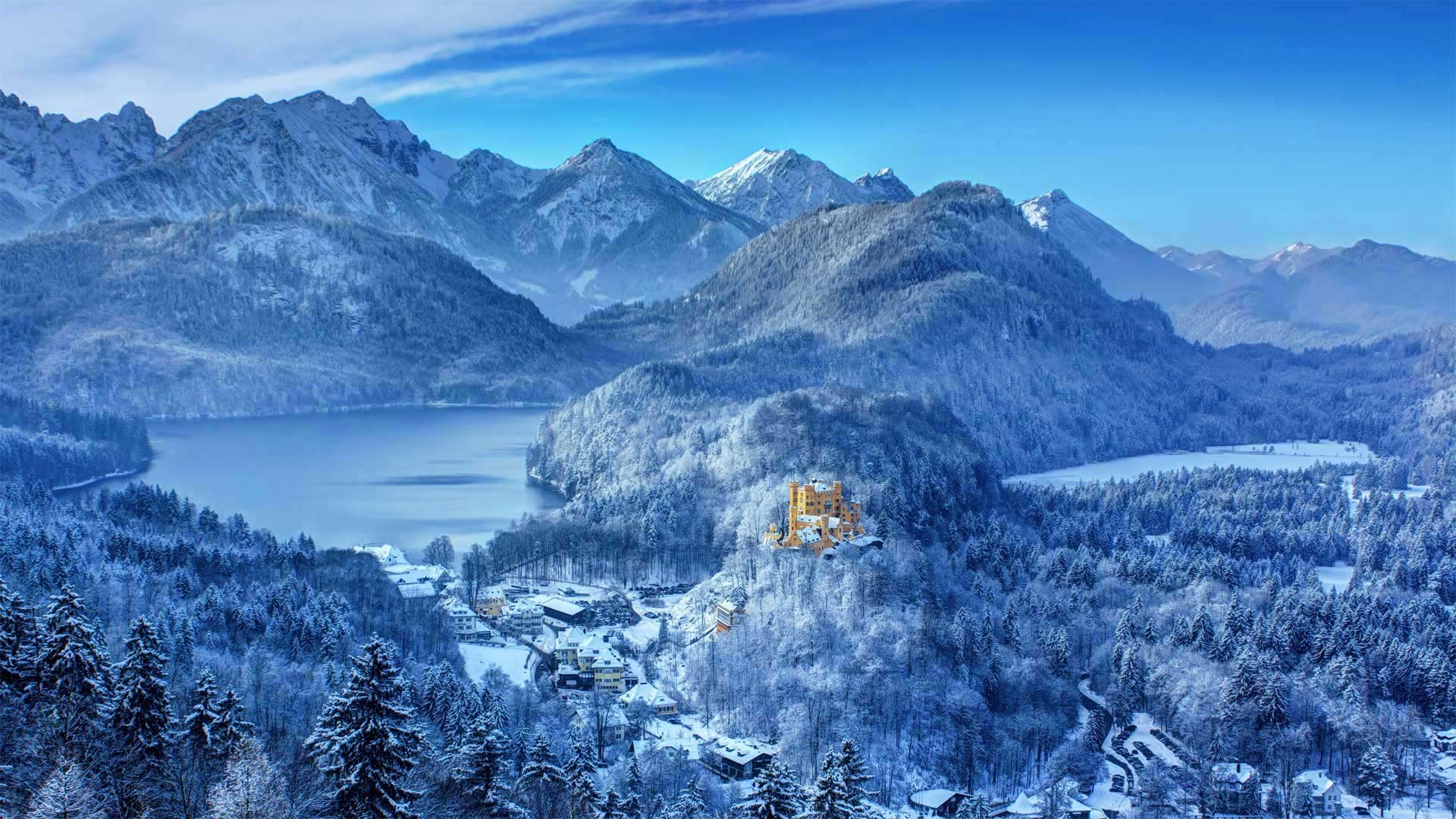
霍恩施万高城堡, 巴伐利亚, 德国 Hohenschwangau Castle, Bavaria, Germany (© Mespilia/Shutterstock)
An Alpine fairytale castle
During a walking tour in the spring of 1829, Crown Prince (and future King) Maximilian II of Bavaria fell in love with these forested mountains and Alpine lakes, so three years later he bought the dilapidated remains of a 12th-century castle overlooking the village of Hohenschwangau. The yellow neo-Gothic castle that Maximilian built to replace the earlier ruins became the summer home and hunting retreat for the king, his wife Marie of Prussia, and their two sons, Ludwig and Otto. Hohenschwangau Castle became a kind of fantasy palace, particularly for the two young princes, who spent their time traipsing through the forest, reciting poetry, and staging scenes from the Romantic operas of Richard Wagner.
After the death of King Maximilian in 1864, Ludwig ascended to the throne and moved into his father's rooms in Hohenschwangau castle. He ordered that stars be painted onto the bedroom's ceiling and had them illuminated by hidden oil lamps. Ludwig and his successors made few other modifications, so most of the rest of the castle remains unchanged even today—the 19th-century interiors contain period furniture, and preserved on the walls are more than 90 frescoes depicting heroic German folklore and the medieval legends of Wagner's operas.
阿尔卑斯山童话城堡
在1829年春天的一次徒步旅行中,巴伐利亚的王储(和未来国王)马克西米利安二世爱上了这些森林覆盖的山脉和阿尔卑斯山湖泊,因此三年后,他买下了一座12世纪的城堡的破旧遗骸,俯瞰着霍恩施旺高村。马克西米利安为取代早期遗址而建造的黄色新哥特式城堡成为国王、普鲁士的妻子玛丽和他们的两个儿子路德维希和奥托的夏季家园和狩猎撤退地。霍恩施万高城堡成了一座梦幻宫殿,尤其是对两位年轻的王子来说,他们花时间在森林中穿山,背诵诗歌,并上演理查德·瓦格纳的浪漫歌剧场景。
1864年马克西米利安国王去世后,路德维希登上王位,搬进了他父亲在霍恩施旺高城堡的房间。他命令把星星涂在卧室的天花板上,用隐藏的油灯照亮它们。路德维希和他的继任者几乎没有进行其他修改,因此城堡的其他大部分仍然保持不变——19世纪的室内装着时期的家具,墙壁上保存着90多幅壁画,描绘了德国英雄的民间传说和瓦格纳歌剧的中世纪传说。
日落时分被雪覆盖的挪威云杉林,德国图林根 (© Frank Sommariva/ImageBROKER/Offset by Shutterstock)
易北河上的巴斯泰桥,德国撒克逊瑞士国家公园 Bastei Bridge above the Elbe river in Saxon Switzerland National Park, Germany (© Reinhard Schmid/eStock Photo)
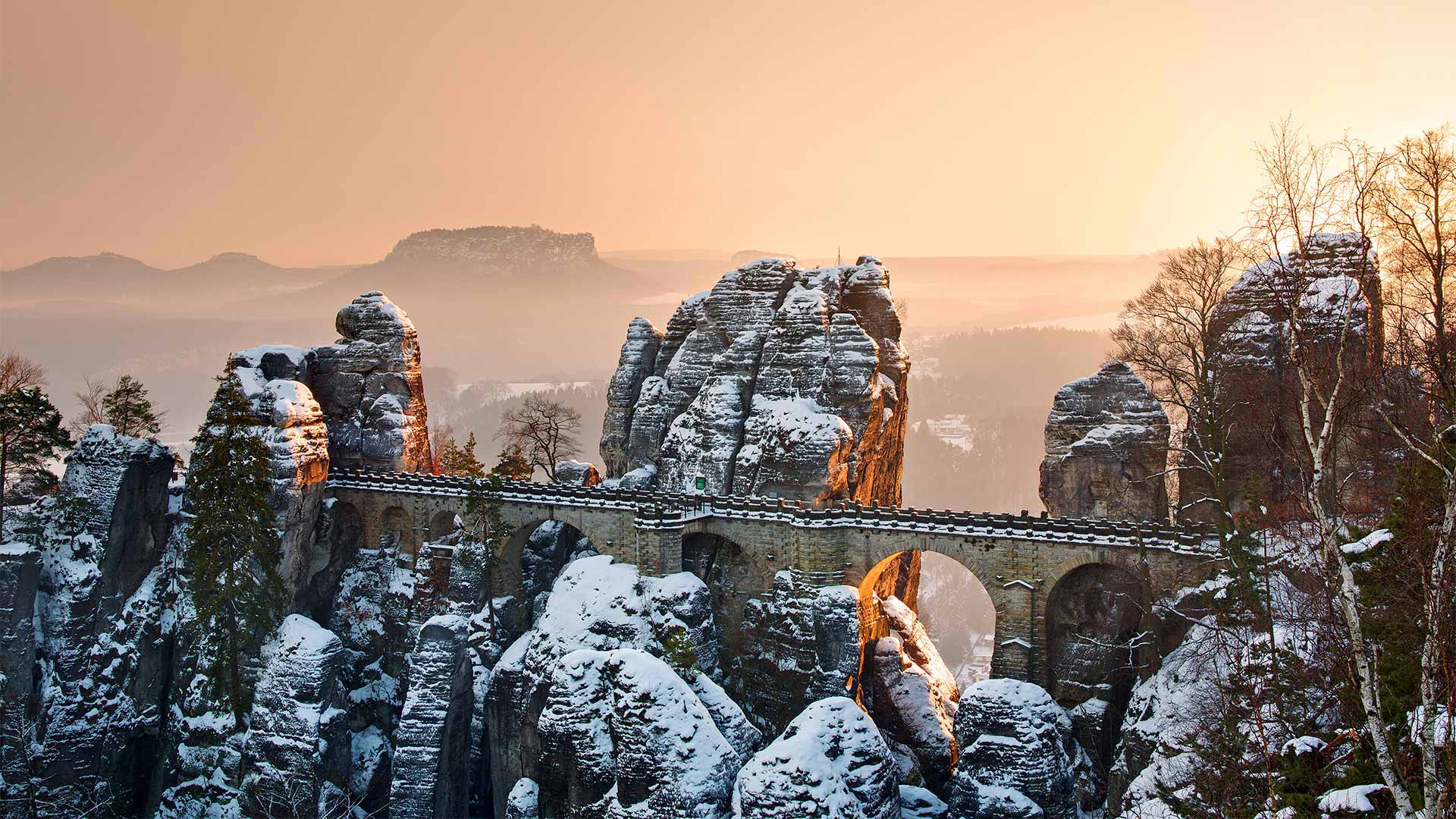
易北河上的巴斯泰桥,德国撒克逊瑞士国家公园 Bastei Bridge above the Elbe river in Saxon Switzerland National Park, Germany (© Reinhard Schmid/eStock Photo)
A bridge that rocks
Sandwiched between soaring pinnacles of sandstone, Bastei Bridge is a highlight of Saxon Switzerland National Park. But don't be fooled by the park's name because we're not in Switzerland; we're hundreds of miles away in eastern Germany, close to the border of the Czech Republic. The name comes from two Swiss artists who visited the area in the second half of the 18th century and felt the picturesque upland scenery was reminiscent of their homeland.
The park boasts untamed forests and spectacular rock formations, including the Bastei in our photo. The rock pillars here were formed by water erosion over a million years ago and tower 636 feet above the Elbe, one of the major rivers in Central Europe. If you're not afraid of heights, you can walk the bridge that has connected these jagged rocks for almost 200 years. Originally made of wood but rebuilt with stone in 1851 to accommodate the increasing tourist traffic, Bastei Bridge offers stunning panoramic views of the river and surrounding Elbe Sandstone Mountains. It also leads to the remains of an ancient castle that once stood here and is now an open-air museum.
岩石桥
巴斯泰桥夹在高耸的砂岩尖顶之间,是撒克逊瑞士国家公园的一大亮点。但不要被公园的名字欺骗了,因为我们不在瑞士;我们在几百英里之外的德国东部,靠近捷克共和国的边界。这个名字来自两位瑞士艺术家,他们在18世纪后半叶造访过这个地区,他们觉得风景如画的高地风景让人想起了他们的家乡。
这个公园拥有未经改造的森林和壮观的岩层,包括我们照片中的巴斯泰。这里的岩柱是由一百万年前的水蚀形成的,耸立在易北河上方636英尺处,易北河是中欧主要河流之一。如果你不怕高,你可以走过这座连接这些参差不齐的岩石将近200年的桥。巴斯泰桥最初是用木头建造的,但在1851年用石头重建,以适应日益增长的游客流量,在它上面可以看到令人惊叹的易北河全景和周围的埃尔贝砂岩山脉的全景。它还通向一座古堡的遗迹,该古堡曾经矗立在这里,现在成为了一座露天博物馆。
混交林,菲森,巴伐利亚,德国 (© Erich Kuchling/DEEPOL by plainpicture)
瓦尔内明德的帆船,德国 Sailboats in Warnemünde, Germany (© Rico Ködder/Getty Images)
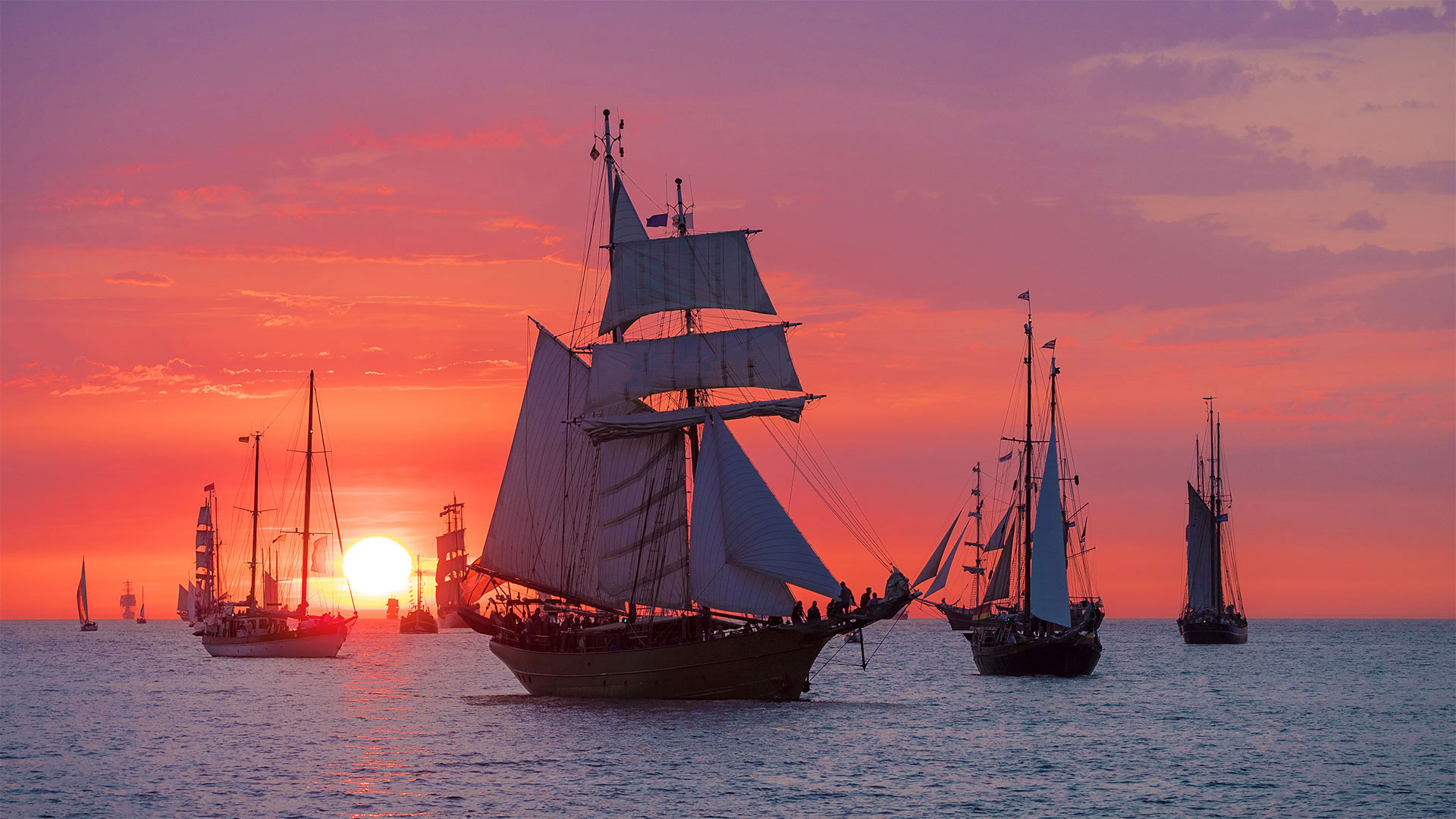
瓦尔内明德的帆船,德国 Sailboats in Warnemünde, Germany (© Rico Ködder/Getty Images)
Arrr, it be Talk Like a Pirate Day
These sailboats in Warnemünde, Germany, set the scene perfectly for International Talk Like a Pirate Day. The holiday (yeah, we're calling it a holiday) was first imagined in 1995 by two Oregon residents. September 19 was chosen for the annual observance since one of them had an ex-wife whose birthday fell on that day and they figured they could remember it. A few years later, seeking widespread adoption, they pitched the idea to humor columnist Dave Barry, who wrote, 'Every now and then, some visionary individuals come along with a concept that is so original and so revolutionary that your immediate reaction is: "Those individuals should be on medication."' From there, it went viral, and these days, September 19 is celebrated internationally, with major brands and media personalities joining in the silliness. We're fans, too. Just picture us typin' this here with an eye patch, peg leg, an' pocket full o' swag doubloons. Arrr!
